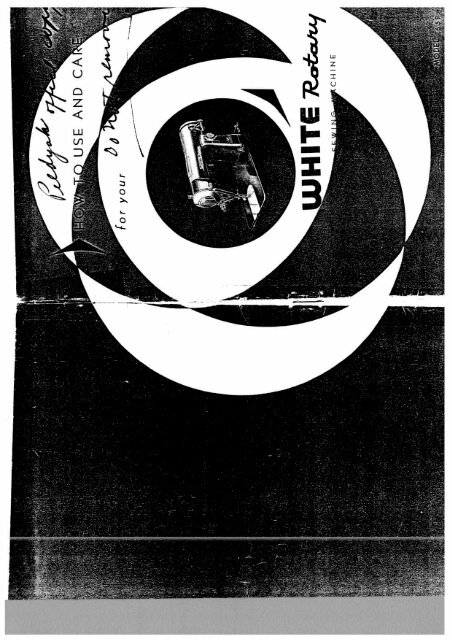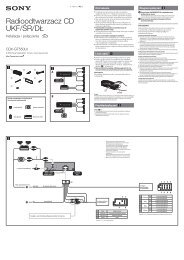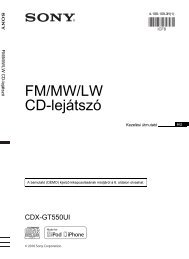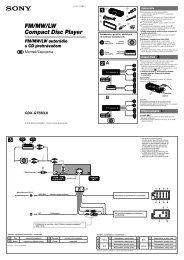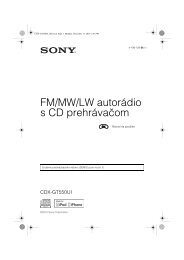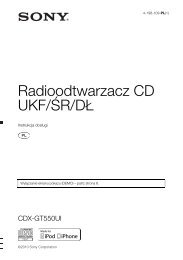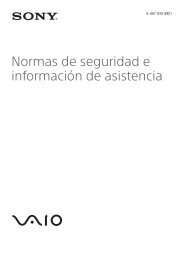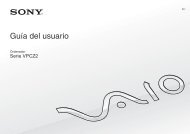Create successful ePaper yourself
Turn your PDF publications into a flip-book with our unique Google optimized e-Paper software.
for your<br />
-TQ USE<br />
i’- 0<br />
71-<br />
AND<br />
tI<br />
- C 14 I N
clamp screw and insert the<br />
needle up into the needle<br />
clamp, as far as it will go,<br />
with its flat surface to the<br />
I. CORRECT SEWING POSTURE<br />
right ; then retighten the clamp screw.<br />
\ [ -NFIDJF<br />
NFifl.K .j’j<br />
lot .:<br />
Fig. 2<br />
CONTENTS<br />
The correct sewing posture is valuable 1)0th for the sake of efliciency<br />
and for health.<br />
Sit naturally without bending over too far.<br />
1.<br />
2.<br />
3.<br />
.1.<br />
5.<br />
6.<br />
7.<br />
8.<br />
9.<br />
10.<br />
11.<br />
12.<br />
13.<br />
14.<br />
15.<br />
16.<br />
17.<br />
18.<br />
19.<br />
20.<br />
21<br />
22.<br />
23.<br />
21.<br />
C rrect Sewing Posture<br />
Operation of hand Wheel<br />
1)isengaging The Sewing Mechanism<br />
Page<br />
Se ting The Needle Properly 1<br />
L.Jper Threading 2<br />
Thread Cutter In Face Plate 3<br />
To Adjust The Pressure On the Material 3<br />
To Remove The Bobbin Case And Bobbin 4<br />
To Wind The Bobbin 4<br />
To Insert The Bobbin Into The Bobbin Case 5<br />
To Replace The Bobbin Case 6<br />
Dn wing Up The Under Thread 7<br />
Be inning A Seam<br />
Fin shing A Seam 7<br />
To Regulate Tension 8<br />
Relative Sizes of Needle And Threads 0<br />
Regulating Length of Stitch l()<br />
I)rop Feed Adjustment<br />
Turning A Corner II<br />
To Sew Jersey Or Bias Seams 11<br />
(leaning A iid Oiling The Machine 12<br />
Che k List For Smooth Sewing 13<br />
Light i<br />
Operating The Machine With Electric Motor<br />
It is important to have the center of the body exactly in front of<br />
the needle bar when sewing.<br />
2. OPERATION OF HAND WHEEL<br />
Be sure that the balance wheel always<br />
turns toward you no matter whether<br />
it is driven by a motor or revolved by<br />
hand.<br />
3. DISENGAGING THE SEWING MEChANISM (See Fig. 1)<br />
There is a clutch nut in the center of the hand wheel as shown in<br />
Fig. 1. Turning this device allows the wheel to run free so that<br />
bobbins may be wound without operating the sewing mechanism.<br />
To disengage the wheel, hold it with the left hand, and with the<br />
right hand turn the clutch nut toward you. In return machine to<br />
sewing operation, hold the wheel and tighten the clutch nut by<br />
turning away from you or clockwise.<br />
Turn the balance wheel<br />
toward you until the needle<br />
bar rises to the highest<br />
point. Loosen the needle<br />
4. SETTiNG THE NEEDLE PROPERLY<br />
NEKDI .E DAN -i1hi<br />
I 1...— NLiJ i:<br />
‘I<br />
rL<br />
-‘<br />
( AM P .. FLAT<br />
‘IIiHEAI) (;UANI) \,J ScttKW StJRFAc<br />
NEEDLE<br />
II (LAMP
5. UPPER THREADING (See Figs. 3, 4 and 5)<br />
6. ThREAD CUTTER IN FACE PLATE (See Fig. 3)<br />
Turn the balance wheel toward you until the needle is all the way up.<br />
.<br />
Place the spool of thread on<br />
the spooi pin (I), (which is<br />
hinged on the top of the arm<br />
and is leveled when not in use),<br />
draw the thread toward the<br />
upper thread guide (2), down<br />
and around from back to front<br />
between tension discs (3), up<br />
to the back of the L-shaped<br />
thread guard (4), down into<br />
the hook of the thread take-up<br />
spring (5), and over through<br />
the slot between the round<br />
face plate cover (6) and the<br />
face plate (8), from back to<br />
front, allowing the thread to<br />
fall in place over the take-up discs, pass the thread clockwise around<br />
the thread-return guide (9), and over through the same slot from<br />
front to back, allowing the thread to fall in place over the take-up<br />
discs. Pass he thread<br />
down through the<br />
eyelet (ho), on the face<br />
plate (8), aid into the<br />
lii read guh ie (II), at<br />
the lower tOLl of the<br />
needle ha r, then from<br />
left In i-ight lb rough<br />
the eye (I }), of the<br />
need he, le:ving I lie -<br />
-<br />
A thread cutter (7), (Fig. 3) is fixed to the face plate cover (6), (Fig. ),<br />
so that winding of thread on the rotary discs is prevented in the<br />
event of thread breakage. Take out severed thread by removing<br />
the cover as shown in Fig. 3.<br />
7. TO ADJUST THE PRESSURE ON TIlE MATERIAL<br />
It is necessary to adjust the pressure on the presser foot according<br />
to the fabric to l)e sewn. It should be heavy enough to prevent the<br />
material froni rising with the needle but still enable the work to<br />
feed along smoothly. The heavier the material is, the more pressure<br />
is required. Fine materials such as thin silk require only a light<br />
pressure. Pressure adjustment is made very conveniently with this<br />
machine. To release pressure completely for darning, press down<br />
on the outer rim of the cap, and the center pin will pop up- 10<br />
readjust pressure suitable to different weight fabrics, press center<br />
pin down until proper pressure is obtained.<br />
Ig. 6 Fig. 7<br />
cuLl of the thread 3 -<br />
oi I inches long.
TIlE BOBBIN CASE<br />
—5—<br />
8. TO REMOVE TIlE BOBBIN CASE AND BOBBIN<br />
Turn the ha ance wheel toward you until the needle bar is at its<br />
highest poin . Flip open the hinged cover<br />
plate in the bed of the machine so that<br />
the under Lb reading can be seen. Grasp<br />
the hinged I itch of the bobbin case (See<br />
Fig. 8) and withdraw the bobbin case.<br />
While the Ia ch is held open, the bobbin<br />
is retaine(l n the bobbin case and will<br />
not drop out. On releasing the latch and<br />
turning the bobbin case downward, the<br />
bobbin will drop out. If the bobbin case<br />
‘ 8<br />
is forcibly removed when the needle bar is down, thus bending the<br />
needle or damaging the hole of the bobbin, it will cause trouble<br />
and un pair lie working of the machine.<br />
Fig. to Fig. ii<br />
uneven stitch. In case the thread winds to one side of the bobbin,<br />
loosen the tension bracket screw and adjust the setting. (See Fig. Ii)<br />
10. TO INSERT TIlE BOBBIN INTO<br />
9. [‘0 WIND TIlE BOBBIN (See Figs. 9, 10 and 11)<br />
Turn the clutch nut toward you and<br />
place a spool of thread on the spool<br />
pin at the base of the machine, draw<br />
the thread under and between the bobS<br />
bin winder tension discs (1) and up.<br />
Insert end of thread through a hole in<br />
bobbin and place bobbin on spindle (2),<br />
Fig. 10, making sure the wire spring<br />
of the spindle<br />
F<br />
fits into the<br />
g.<br />
notch of the<br />
9<br />
bobbin. Press the stop latch (3) with<br />
thumb, and he rubber ring (5) will come in contact with the balance<br />
wheel as th guide (4) contacts the bobbin.<br />
Hold onto the thread end for a few turns and start machine slowly.<br />
\Vhen the bobbin is filled the winder pulley is automatically released<br />
[ruin (he hind wheel. A correctly wound bobbin will ensure a<br />
smoot lily iii ming thread from the shuttle and will l)revent an<br />
I’ig. 14<br />
After winding the bobbin, hold it between the thumb and forefinger<br />
of right hand, thread leading on top from the left toward the<br />
right.<br />
With the left hand hold the bobbin case with its slot up, and place<br />
— 4<br />
-—
12. DRAWING UP THE LJNDEIt<br />
TIl READ<br />
With the left hand hold the end of the<br />
needle thread loosely, turn the hand<br />
wheel lightly toward you with the right<br />
hand until the needle goes down afl(i<br />
up again to its highest point, thus<br />
catching the under thread. Then, draw<br />
up the needle thread you are holding,<br />
and you will see the under thread<br />
plate Lay both threads back under the presser foot I1)Out 2 inches.<br />
13. BEGINNING A SEAM<br />
Raise the needle bar to its highest point. You can be sure it is iii<br />
the correct position when the color in the tiny window on the<br />
face plate is white, not red. Place the edge of cloth to be stitched<br />
just far enough under the presser foot so that the first stitch may<br />
be taken in the material. Then, lower the presser foot upon it and<br />
start sewing by turning the hand wheel toward you.<br />
Fig. 17<br />
Fig. 17. Always leave the<br />
end of the thread 3 or 4 inches long to prevent its pulling through<br />
the needle when you start sewing the next seam.<br />
—6— —7—<br />
the bobbin uto it. See Fig. 12. Then, draw the thread into the slot<br />
in the edge of the bobbin case, pull (lOWfl under the tension spring<br />
See Fig. 1 1) and into its delivery eye at the top of the tension<br />
spring. See Fig. 14.<br />
11. TO REPLACE TIlE BOBBIN CASE<br />
Raise the n. edle bar to its highest point and open the hinged cover<br />
plate. 1101(1 the hinged latch of bobbin case between thumb and<br />
foreliiiger ol the left hand and insert the bobbin case onto the center<br />
stud of the shuttle, fitting the tongue into the notch at the tol) of<br />
Fig.<br />
coming up with the upper thread<br />
through the needle hole in the needle<br />
Fig. 15<br />
14. FINIShING A SEAM<br />
the shuttle i ace. Release the latch anti ires the bobbin case until<br />
the latch cal ches the groove near the end of stud. if the bobbin<br />
case is plated incorrectly, it will cause trouble such as needle<br />
breaking, ta ogling of thread, etc. Always BE SURE the bobbin case<br />
tongue is co rectly fitted into the notch of the shuttle race.<br />
When you have finished a seani, turn<br />
hand wheel toward you until the needle<br />
bar is at the highest point. Raise the<br />
presser foot. Then, move the material<br />
straight back, far enough to cut the<br />
upper and under threads with the<br />
thread cutter attached to the presser<br />
bar. Hold the thread with both hands<br />
and cut with a quick down motion. See
Mediuni—heavy drapery fib—<br />
nc, velveteen, suiting, felt,<br />
Needle<br />
No.<br />
0<br />
00<br />
Machine Silk<br />
Stitches<br />
Culton Mercerized<br />
‘l’hread ‘l’hread<br />
or<br />
Per loch Nylon<br />
6 10<br />
4 to to<br />
8 30<br />
8 30<br />
3 to I to<br />
10 40<br />
II) j 40<br />
2 tu to<br />
12 60<br />
to<br />
14<br />
to<br />
16<br />
llast ic<br />
Filoi 8<br />
to ID;<br />
16<br />
to<br />
20<br />
to 50<br />
80<br />
I (><br />
1(X)<br />
100<br />
to<br />
150<br />
I leavy duly<br />
Heavy duty<br />
Heavy duty j<br />
50<br />
A<br />
50 A<br />
—<br />
15. TO REGULATE TENSiON 16. RELATIVE SIZES OF NEEI)LK AND ThREADS<br />
Fig. 18<br />
Fig. 19<br />
Fig. 20<br />
Correct Stitch)<br />
tTight Upper<br />
‘l’eiision)<br />
(Tight Lower<br />
Tension)<br />
A perfect stitch can be obtained only when the thread and iiedle<br />
are suitable for the fabric. Please consult the following table of<br />
relative sizes of needle and threads for various materials.<br />
I’or ordinay stitching, it is very essential that the lock stitch for<br />
NEEDLE--THREAD FABRIC-STITCIHNG GUIDE<br />
ination is iaade in the center of cloth as shown in Fig. 18.<br />
If the tensun on the needle thread is too tight or that on the bobbin -<br />
Fabric<br />
thread is too loose, the needle thread will lie along the upper sur<br />
face of cloth as shown in Fig. 19.<br />
if the tensi an on the bobbin thread is too tight or that on the needle<br />
Extremely heavy tarpaulin,<br />
sacking, canvas, duck, etc.<br />
thread is too loose, the bobbin thread will lie along the under side<br />
of cloth as shown in Fig. 20.<br />
Heavy upholstery fabric tick<br />
ing, denim, leatherette etc.<br />
terry, etc.<br />
It<br />
Medium broadcloth, percale,<br />
gingham, linen, chintz, taffeta,<br />
sheer wool, shati Lu ig, etc<br />
12 60<br />
Ii 8’)<br />
j<br />
[‘1g. 21<br />
Fig. 22<br />
Sheer voile, lawn, dimity,<br />
crêpe, handkerchief linen,<br />
‘fhe tension on the needle thread is regulated by turning the tension<br />
plastic film, etc.<br />
dial, with the presser foot down, shown in Fig. 21, to the right to<br />
Very sheer chiffon, batiste,<br />
tighten and to the left to loosen. The tension on the under thread<br />
lace, organdy ninon, net,<br />
is regulated by turning the tension screw in the bobbin case spring,<br />
marquisette, etc.<br />
showit in Fig. 22, to the right to tighten and to the left to<br />
loosen.<br />
—8—
— 10<br />
17. REGULATING LENGTh OF STiTCH<br />
farther above the plate surface, making it suitable for sewing thick<br />
A nuinbere dial and lever (Fig. 2) control<br />
the stitches lo adjust, move the lever to<br />
turn the dia’ until the number stitch length<br />
i e iuired is directly under the indicator.<br />
No. I is (1 e shortest stitch and No. 12<br />
the length or size of<br />
the mid position, and I.<br />
material. When the red arrow on the knob points to UP there is<br />
maximum projection. Turning the knob to the left (counter-clockwise)<br />
will lower the feed, and when the arrow points to l)OWN, the<br />
teeth will he below the plate surface. In this position, no movement<br />
the longest. Next, move the lever down,<br />
and the ma hine will sew stitches accor<br />
ding to the iumber chosen.<br />
To reverse stitch, (10 not touch the dial<br />
but push tI e lever up. This will cause<br />
the material being sewn to travel in the<br />
oI)l)osite clir ction without any change in<br />
the size of stitches.<br />
I’ush dOWn I again sew for ward.<br />
lig 23<br />
Fig. 25<br />
18. DROP FEED ADJ USTMENT<br />
will be transmitted to the material, and this acljustineiit will be<br />
suitable for embroidery work. When commencing to sew, adjust<br />
It is necessat y to adjust the height of the feed clogs according to<br />
the thickness of the cloth being sewn. For thin material, only a<br />
the feed by moving the knob to tile most suitable position according<br />
to tile thickness of the material being sewn.<br />
4<br />
slight projection above the plate is<br />
required ; for thick material, more teeth<br />
should show above the plate, but not<br />
UP I)DOWN to such an extent as to cause marks<br />
\o on the cloth being sewn. Proper adjust-<br />
Ordinarily, the arrow should point to the feed position showii iii<br />
Fig. 24.<br />
19. TURNING A CORNER<br />
F F E )<br />
ment will result in neat and even<br />
1 ig.<br />
stitching.<br />
The adjusting knob for controlling the<br />
height of the feed dogs is conveniently located on the bed plate, as<br />
When a turning point has been reached, stop sewing with the needle<br />
deep in the cloth. Raise the presser foot and turn the cloth, as<br />
desired, using needle as a pivot. Then, lower the presser foot.<br />
shown in Fig 25, and adjustments can be made even while the<br />
machine is running. A uIne adjustment of the height is possible, a<br />
20. TO SEW JERSEY OR BIAS SEAMS<br />
special featurt not found on any other sewing machine, Turning<br />
the knob to he right (clockwise) will cause the feed to project<br />
Use a short stitch and as light a tension as possible, or the thread<br />
will break easily when the cloth is stretched.<br />
—
Tension<br />
— 1- —<br />
21. CLEANING ANI) OILING THE MAChINE 22. ChECK LIST FOR SMOOTH SEWING<br />
LLLJ<br />
For quiet operation and a long<br />
(1) UPPER THREAI) BREAKS<br />
Fig. 26<br />
J<br />
life for your machine, it is<br />
necessary to oil the machine<br />
well, and to keep it free of dust<br />
by an occasional thorough clean<br />
ing. One drop of high grade<br />
machine oil should be applied<br />
each day the machine is used<br />
to each point where there is<br />
any friction. Oiling points are<br />
indicated in Fig. 26 and 27. Oil<br />
should be applied through oiling<br />
point (1) by raising the presser<br />
foot. Oil should be applied to oil<br />
hole (2) by lowering the needle<br />
to its lowest position so that<br />
the oil hole of the crank connect<br />
a. Machine is improperly threaded.<br />
b. -<br />
is too tight.<br />
c, Needle is bent or has blunt point,<br />
d. Thread is too coarse for size of needle.<br />
(2) LOWER THREAD BREAKS<br />
a. Tension is too tiglit.<br />
b. Bobbin case or shuttle is improperly threaded.<br />
c. Thread is wound too full on bobbin or bobbin is worn,<br />
d. Spring on bobbin case or shuttle is worn to sharp groove.<br />
e. Needle has been inserted improperly.<br />
(3) NEEDLE BREAKS<br />
a. Sewing heavy fabric with a needle too fine.<br />
b. Presser foot or attachment is insecurely fastened to the bar.<br />
c. Needle is incorrrect size or is set improperly.<br />
(4) MACHINE SKIPS STITChES<br />
Fig. 27<br />
?Ig. 28<br />
-- .4<br />
— 12<br />
ing rod comes under hole (2)<br />
Fig 27<br />
lo oil the shuttle race, lift the<br />
cover plate and put a few drops<br />
of oil into the shuttle race. ho<br />
oil the under side of the bed,<br />
tilt the machine back as shown<br />
in Fig. 28 and oil all the moving<br />
parts in contact with each<br />
other.<br />
a. Needle is not accurately set into the needle bar, is blunt or<br />
bent.<br />
b. Needle is too short for the machine.<br />
c, The pressure regulating thumb screw is not tight.<br />
(I. The point of the shuttle is broken.<br />
(5) STITCHES LOOP<br />
a. Looped stitches are usually caused by an improper tension.<br />
b. When the ioop appears on the upper side, it may be corrected<br />
by tightening the under tension, and when the loop occurs<br />
on the under side, tighten the tension of upper thread.<br />
c. Take-up spring is placed incorrectly md its tension not<br />
sufficient.<br />
d. Upper and lower threads are not properly threaded.
the right.<br />
_______________<br />
When removing the lalul),<br />
Open the lanil) cover (I). Fig.<br />
32, raise the socket and<br />
unscrew the lamp C). When<br />
installing a new lamp, screw<br />
(6) PUCKERED SEAMS<br />
a. Te sion is too tight.<br />
b. Sti:ch is too long for material being sewn.<br />
c. Wiong presser foot is used.<br />
(7) MPCIIINE WORKS hEAVILY<br />
a. Mving parts need oil.<br />
b. Ma.hine runs hard due to gummed oil. In this case all working<br />
parts should be carefully cleaned with kerosene, which will<br />
loosen the old oil. Run the machine rapidly for a few minutes<br />
am wipe thoroughly with a piece of cheese cloth. Then, oil<br />
all working parts with high grade sewing machine oil.<br />
I<br />
c. Clean dust and fluff from race, the<br />
race cover and shuttle thoroughly.<br />
Apply a small amount of oil to race<br />
and shuttle.<br />
d. Be sure needle is still at its highest<br />
point. Hold shuttle center by pin<br />
fitting against<br />
and replace, it snugly<br />
driver. Replace race cover with<br />
notch at top.<br />
e. Turn latches up so that they fit<br />
over pins on shuttle race cover.<br />
Fig. 30<br />
c. The thread is caught and still remains between the shuttle<br />
rae and the shuttle.<br />
(8) CLEANING ANI) OILING TIlE SHUTTLE AND RACE<br />
(9) USE CAUTION WhEN RUNNING TIlE MACHINE<br />
When you run the machine, once it is threaded, make sure tbal<br />
the presser foot is lowered and that there is cloth between the<br />
When the machine is being used, fluff and dust may accumulate in<br />
the shuttle race, making the machine<br />
presser foot and the needle plate, or the threads may get tangled<br />
and jam the shuttle or damage and break the needle.<br />
work hea vily and noisily. Or when the<br />
machine is turned in the wrong direc<br />
tioli, thread can be caught between<br />
23. LIGhT<br />
ihe switch to turn the light on and off (Fig. ‘31) (I) is fixed in the<br />
the slutt Ic and shuttle race, causing<br />
arm under the balance wheel.<br />
the mach ne to stop. in such cases, if<br />
The light is t urnedl on an(l<br />
you cleai the parts in the following<br />
off by turning the switch to<br />
manner t ic machine will run smoothly<br />
and light y, as before.<br />
a. Raise the need Ic bar to its highest<br />
point and remove bobbin case. Tilt<br />
away from you.<br />
Fig. 29<br />
the head of the machine<br />
4<br />
I). ‘I’urn down latches holding shuttle race cover on each side.<br />
Pull kinge(l race cover down and remove shuttle. if race cover<br />
falls ff bracket it can he replaced easily, but be certain the two<br />
small pins appear on the outside of the cover when it is in<br />
nig position.<br />
big. 31<br />
in the lamp, lower the bulb<br />
and shut the lamp cover.<br />
Cleaning of the Light Refractor (see Fig. 33). When removing the<br />
light refractor (I), pull it down by the latch and remove froi tI<br />
frame. Clean the msi(le and out side of the refractor prism and replace.<br />
— 14 —
I<br />
Fig. 32<br />
24. OPERATING THE MACHINE WITh<br />
ELECTRIC MO’roR<br />
(1) F 0(1 Control.<br />
‘l’he ek etric motor is started and stopped or run at any (leSire(l<br />
speed by varying the pressure on the foot control.<br />
To stoj, release all pressure: to start, press gently; to sew faster,<br />
press ha ncr.<br />
2 ) Knee Lever Control<br />
(Fig 34)<br />
‘I’hc Ilk )st at f( )r varying t he<br />
motor sPed is placed insi(le<br />
the cabinet and is operated by<br />
a knee Ic ‘er.<br />
A gent e pressure of the<br />
II<br />
right kn& e against the lower<br />
euti of I is lever starts the<br />
Fig. 34<br />
11<br />
machine slowly and the speed can be increased as desired by<br />
pushing further to the right. When the pressure on the knee lever<br />
is release’1 the machine stops automatically.<br />
— 16


